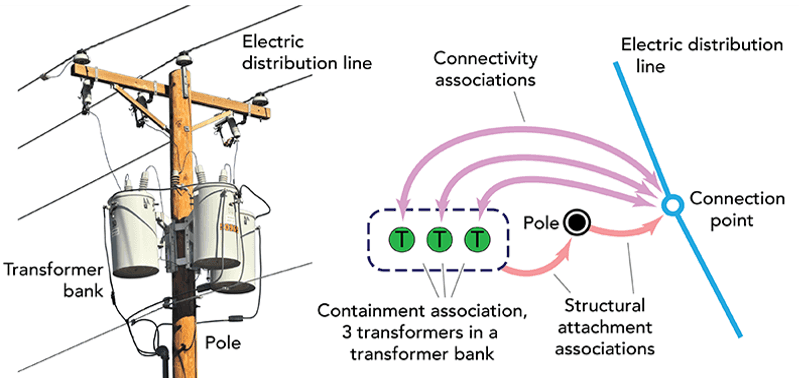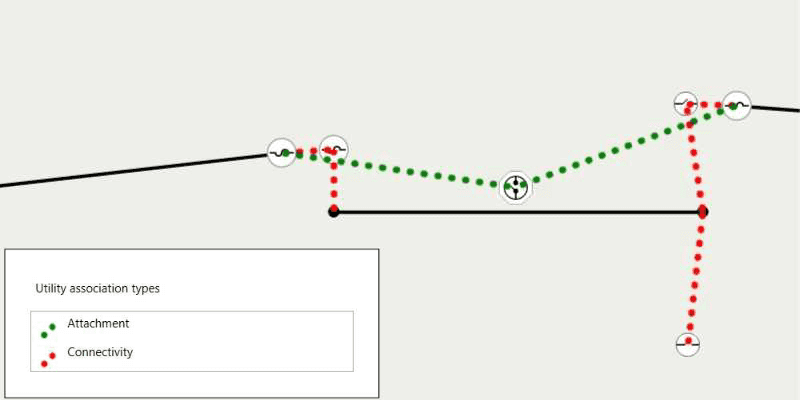Associations enable the modeling of connectivity, containment, and structure attachment between non-spatial and non-coincident network features. The following table describes the types of relationships between two utility network elements:
| Association | Description | Geometry supported |
|---|---|---|
| Connectivity | Models the connectivity between two junctions that don't have geometric coincidence (are not in the same x, y and z location). A transformer may be connected to a fuse, for example. | Yes |
| Structural attachment | Models equipment attached to structures. A transformer bank may be attached to a pole, for example. | Yes |
| Containment | Models assets that contain other assets. A vault may contain valves and pipes, for example. | No |

// Get the elements associated with a single utility element (using containment).
ListenableFuture<List<UtilityAssociation>> utilityAssociationList =
utilityNetwork.getAssociationsAsync(utilityElement, UtilityAssociationType.CONTAINMENT);
utilityAssociationList.addDoneListener(() -> {
try {
List<UtilityAssociation> utilityAssociations = utilityAssociationList.get();
if (!utilityAssociations.isEmpty() ) {
for (UtilityAssociation association : utilityAssociations) {
UtilityElement fromElement = association.getFromElement();
UtilityElement toElement = association.getToElement();
}
}
} catch (InterruptedException | ExecutionException e) {
e.printStackTrace();
}
});
Specifying a utility element will return all its associations unless the utility element's terminal has been set, which limits the connectivity associations returned.
Specifying an extent will return all its connectivity or structural attachment associations with geometry. The geometry value (polyline) represents the connection relationship between a from element and a to element. You can use the geometry to visualize the association as a graphic in the map.

